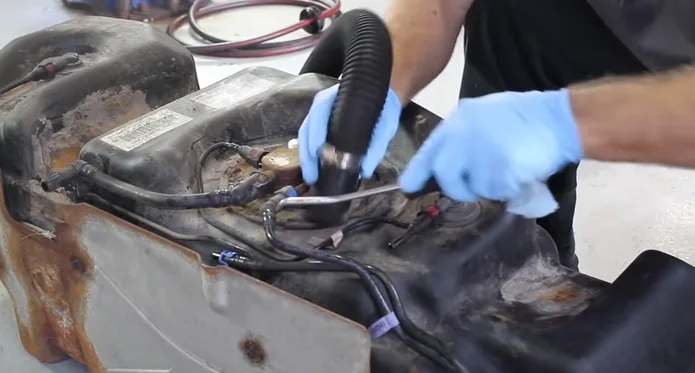Last Updated on March 12, 2023
If you’re like most people, your car’s gas tank is probably filled with rust and grime. Gas tanks are designed to keep fuel from spilling out or evaporating too quickly, but this also means that they can’t be easily cleaned out.
Luckily for those of us who don’t want to risk harming our vehicle by pouring chemicals inside it, there are a few ways you can learn how to clean a gas tank that has been sitting without having to take it apart.
What is a Gas Tank and Why Does It Need to Be Cleaned?
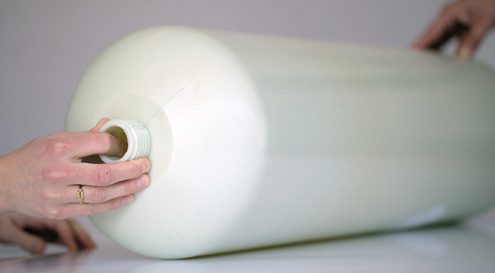
A gas tank is a compartment in your car that holds gasoline. Fuel enters through an opening on the top of the tank and gradually makes its way to where it is needed (usually connected directly to the engine).
Since fuel can get so messy, it’s important to get the inside of your gas tank cleaned at least every year. This will help keep rust from building up and causing issues with your car’s engine.
Steps on How to Clean a Gas Tank That Has Been Sitting
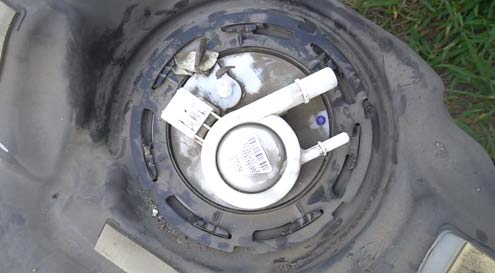
Cleaning your gas tank is a fairly simple process and can be done at home with minimal effort. The steps listed below are extremely important for you to follow if you want to prevent your vehicle from being damaged.
What You’ll Need
- A clean gas tank (to prevent further rusting)
- Rubber gloves (disposable ones are best, but not required)
- Protective goggles or glasses
- An old toothbrush or two (or something similar to do the scrubbing with)
- Stiff wire brush (optional: can be purchased at almost any automotive store)
- A bucket or container that is large enough to hold your gas tank
- Hose with running water (optional, but recommended)
Check Out the Instruction Manual
It’s a good idea to check out the instruction manual for your car and see if there are any special instructions regarding how to remove the gas tank.
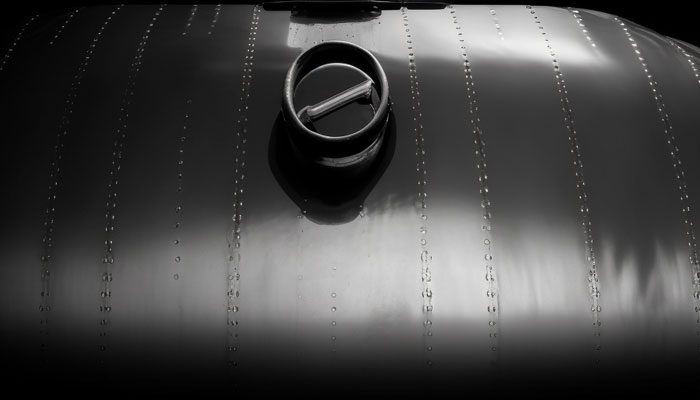
Your vehicle’s manual will probably tell you that it’s not safe to use water or soap when cleaning your gas tank since these can cause more harm than good.
Prepare Your Workspace
To prevent getting dirt and grime everywhere, lay down a bunch of plastic bags on the floor where you will be cleaning the tank. This way, if it slips out of your hands, not much damage will be done.
Turn Off the Gas Supply
Find the valve for turning off your vehicle’s gas supply, usually near where your tank is located. Using a wrench or pliers to turn it all the way off will prevent any accidents from happening while you are cleaning your car’s insides.
Drain Your Tank
You’ll need to drain the gas from your tank if you want to get rid of all of the dirt and grime that has built up over time. Make sure that you have enough containers ready to hold at least a few gallons of fuel before continuing with this process.
Wash Your Fuel Tank with a Pressure Hose

Use a pressure hose or high-powered stream of water from a sink to clean the outside of your gas tank. Since you won’t be using any soap, this step should be pretty simple. In some cases, however, you might have rust that’s deeply embedded in your tank and needs further scrubbing with an old toothbrush or wire brush.
Cover the Drain Hole
If you see that there is rust and grime in your gas tank, cover the drain hole with a towel to prevent anything from slipping out. This will allow you to focus on getting rid of any dirt or grime before draining it again.
Remove What Remains of the Gas
Once you have removed your old gas tank, it’s time to clean out what is left of the fuel that still remains inside. You can do this with a hose or by using buckets of water to wash everything out.
Wipe Down the Outside of the Tank
A clean exterior will help you prevent any rust from building up on the outside of your gas tank. Clean off any dirt, bad gas, grime, or loose metal pieces as best as you can with a towel.
Scrub Out The Inside
Your car’s manual will probably recommend using an old toothbrush to scrub the insides of your gas tank. It’s also possible to use one of the stiff wire brushes that can be purchased from automotive stores.

Rinse Everything Out
After you have finished scrubbing your gas tank, it’s a good idea to rinse everything with water or some other type of liquid that will prevent rust from occurring in the future. If there is any grime leftover inside the tank, it’s a good idea to keep rinsing everything until you are satisfied with the result.
Reinstall Your Gas Tank
After you have thoroughly cleaned out your car’s gas tank, it will be easier to remove rust or other potentially damaging materials that could affect the quality of fuel that is used in the future. You’ll also need to replace the bolts and screws you removed for your tank to be fully attached once again.
The Safety Precautions of Fuel Tank Cleaning

It’s important to be aware of the dangers associated with working on vehicles, especially when you’re dealing with fuel. For example, gasoline is extremely flammable and can cause severe burns if it touches your skin.
- Stay in an open, well-ventilated area when working with fuel.
- If you spill any gas or fuel on your skin, wash it off immediately and seek medical attention if necessary.
- Always use protective gloves and eyewear in case of a fuel spill.
- Keep a fire extinguisher nearby in case something goes wrong while cleaning out your gas tank.
- If you have a gas leak, don’t attempt to start your car until a professional has determined it’s safe to do so.
- If you spot rust, flaking metal, or other signs that there is trouble with the gas tank, stop what you’re doing and have a professional inspect it.
- Just because your fuel tanks appear to be in good condition doesn’t mean you should ignore warning signs that they might no longer be safe.
Tips to Make Your Gas Tank Run Smoothly In The Future
If you want to keep your gas tank in good working order, you should avoid letting gas into your engine’s fuel line in the future. If this happens on a regular basis, it will cause all kinds of trouble with your car’s fuel system and can even result in expensive repairs.
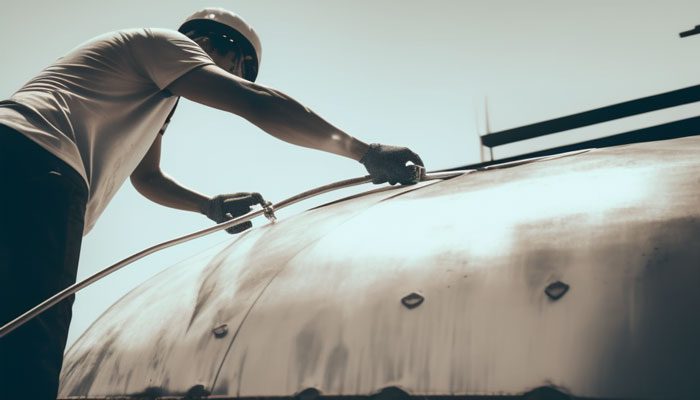
- Keep the gas tank at least half full in order to prevent rust and other problems from occurring.
- Read your vehicle’s manual to determine if it recommends adding fuel stabilizers to your gas tank periodically.
- If you have a newer car that has been sitting for a long time, take it to a mechanic for an inspection before starting the engine again.
- Keep your car’s fuel system in good working order by making sure you have a filter installed.
- Change or clean the filters as needed to prevent dirt, rust, and other particles from entering the gas tank as it stores fuel.
- If possible, always use fresh, quality gasoline instead of using recycled gas from a machine at a service station.
Frequently Asked Question
What are the Various Types of Fuel Filters?
There are two types of fuel filters that are commonly used in modern automobiles. The first is a spin-on filter, which is easy to replace and usually has a long lifespan. A second option is cartridge filters, which can be replaced by removing a screw and pulling out the old fuel filter.
How often should Fuel Filters Be Changed?
Fuel filters should be replaced whenever you change your oil, and it’s also a good idea to check them periodically to make sure they aren’t clogged or damaged. If you find that your filter is dirty at this time, it should be replaced as soon as possible.
How do I Know if My Gas Tank Is in Good Condition?
Signs that your gas tank is no longer safe include rust, loose straps, dents, excessively wet patches on the exterior of the tank, and signs of leakage.
Why Should You Avoid Chemical-Based Cleaners?
Chemical-based cleaners can corrode certain parts of your fuel system and even result in them breaking. In the worst-case scenario, using chemical cleaners can make it more dangerous to use your vehicle if you need to fix a leak or solve other problems that might develop as a result.
Are There any Risks Associated with Cleaning a Gas Tank?
Cleaning out a gas tank can be dangerous, especially if you choose to use gasoline or other fuel-based solvents in order to do so. If you try to work on your vehicle’s gas tank without proper safety precautions, there is a risk that it could catch on fire and cause serious problems for you and anyone else nearby.
Summary
When it comes to cleaning your gas tank, always take the necessary precautions to avoid any dangerous situations. Make sure you have a fire extinguisher nearby in case of emergencies and be sure to wear protective gloves and eyewear when working with fuel. If you notice any rust or other warning signs, stop what you’re doing and consult a professional. By following these tips, you can help keep your gas tank in good condition and reduce the risk of developing serious problems down the road.

